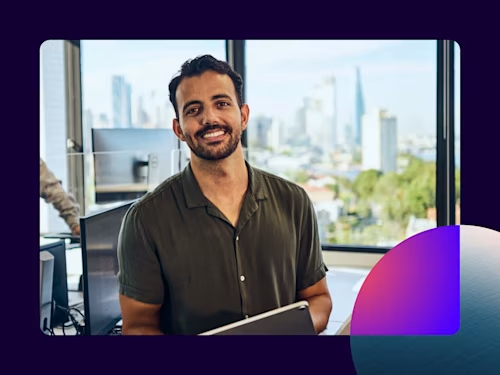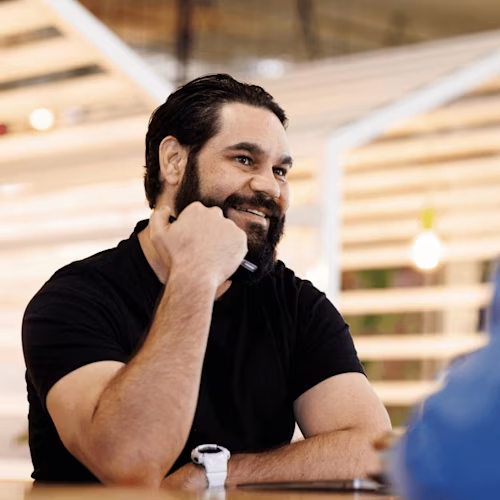A glimpse into the office of the future
Four business leaders make their predictions about what the office of the future may look like. Some common themes include integration and automation.

If you could time travel, what would your workplace look like five, ten, twenty years from now? Would you and your colleagues still be sitting at your desks or standing at your counters, doing whatever it is you do?
We think not, and some of the leading lights in the Australian business landscape agree. We spoke with four people from four very different industries at the recent Docusign Momentum Sydney event, asking them (among other things) to gaze into a crystal ball and comment on what the office of the future might look like.
Here’s what they had to say.
Alex Butterworth, Senior Legal Counsel, McDonald’s
For Alex, who is based at McDonald’s Australia’s head office in Sydney but liaises with franchisees all around the country, the office of the future is at home.
“I'm sure that lots of people in this room work from home regularly or semi-regularly, and it's becoming increasingly common that you're able to work more seamlessly from remote locations,” he said.
Alex believes that the de-aggregation and de-centralisation of the workforce is a good thing, and it’s made possible by new technologies like Docusign.
“One of my favourite features on Docusign is that you can see the location where someone has signed a document. I remember very early on in my job at McDonald's seeing that one of our franchisees was on a beach in Fiji. Docusign pinpointed exactly where they were when they signed the document on their phone.”
Nadia Pertot, Director of Customer & Sales Operations at Domain
Nadia is excited about the potential for technology to create a more integrated and seamless customer experience. She spoke of how there is still a big opportunity to get different internal systems to speak to each other; and of how this ties back to the customer experience.
“We need to give customers the ability to contact us or request something or make a change by whatever channel they prefer. So whether it's seeing someone in person, picking up the phone, speaking to a bot, self-serving online – whatever the preference is, because everybody's different, they've got the ability to do that and choose which way they want to do it,” she said.
David Carr, Commercial Business Affairs at ABC
David agreed with Nadia’s prediction about the importance of integration, expanding on her ideas by suggesting that, soon, if technologies can’t be integrated with other systems then they will go the way of the digital dustbin.
“Integration is the key to everything we do now. If we're taking on any form of new technology, if it can't integrate with the systems that we want to use, then we're not interested. We want every piece of technology we have capturing the data once and then talking to other systems and transferring the data so that it can be reused, captured, stored and part of our business going forward,” said David.
Keryn Paviour-Smith, GM HR Services & Operations, News Corp Australia
Finally, Keryn weighed in about the importance of striking a balance between forging a digital future and delivering on customers’ desires to still be able to pick up a book or a magazine and interact with it in a tactile way.
“From a business point of view, obviously we're moving to digital, but people still love print, like they love to look in a magazine on paper. So we just need to find the balance between those two things,” she said.
“From an HR point of view, it's all about automation and helping people self-serve. Basic queries like ‘What's my leave balance?’ are all being handled by a chat bot now. We’ve automated all those low value tasks as much as possible – but we've still got a really long way to go.”
As do most organisations in Australia, no doubt. But by starting small, it’s possible to quickly realise big benefits. Try it now - sign up for a 30 day free trial.


Docusign IAM is the agreement platform your business needs
